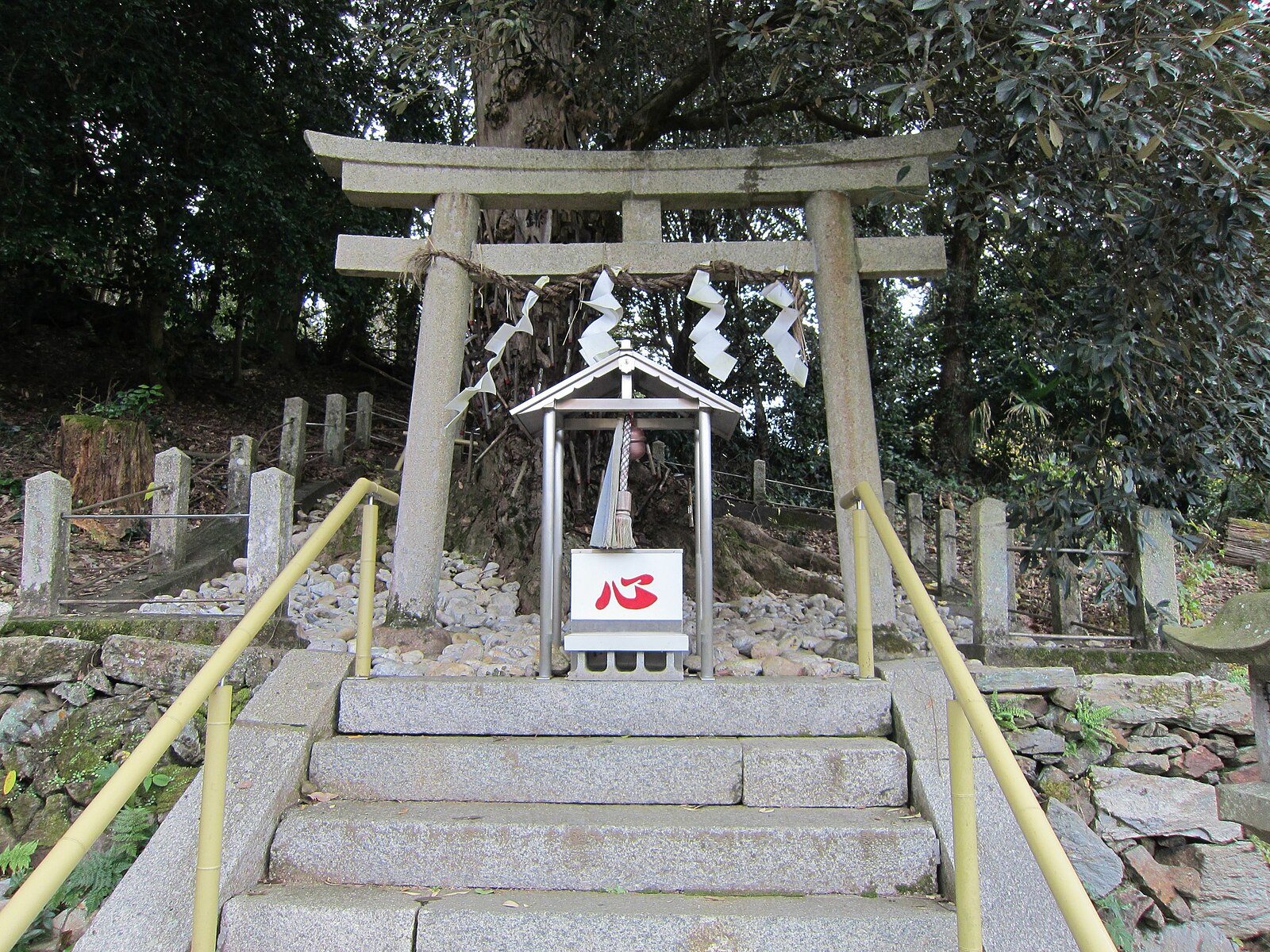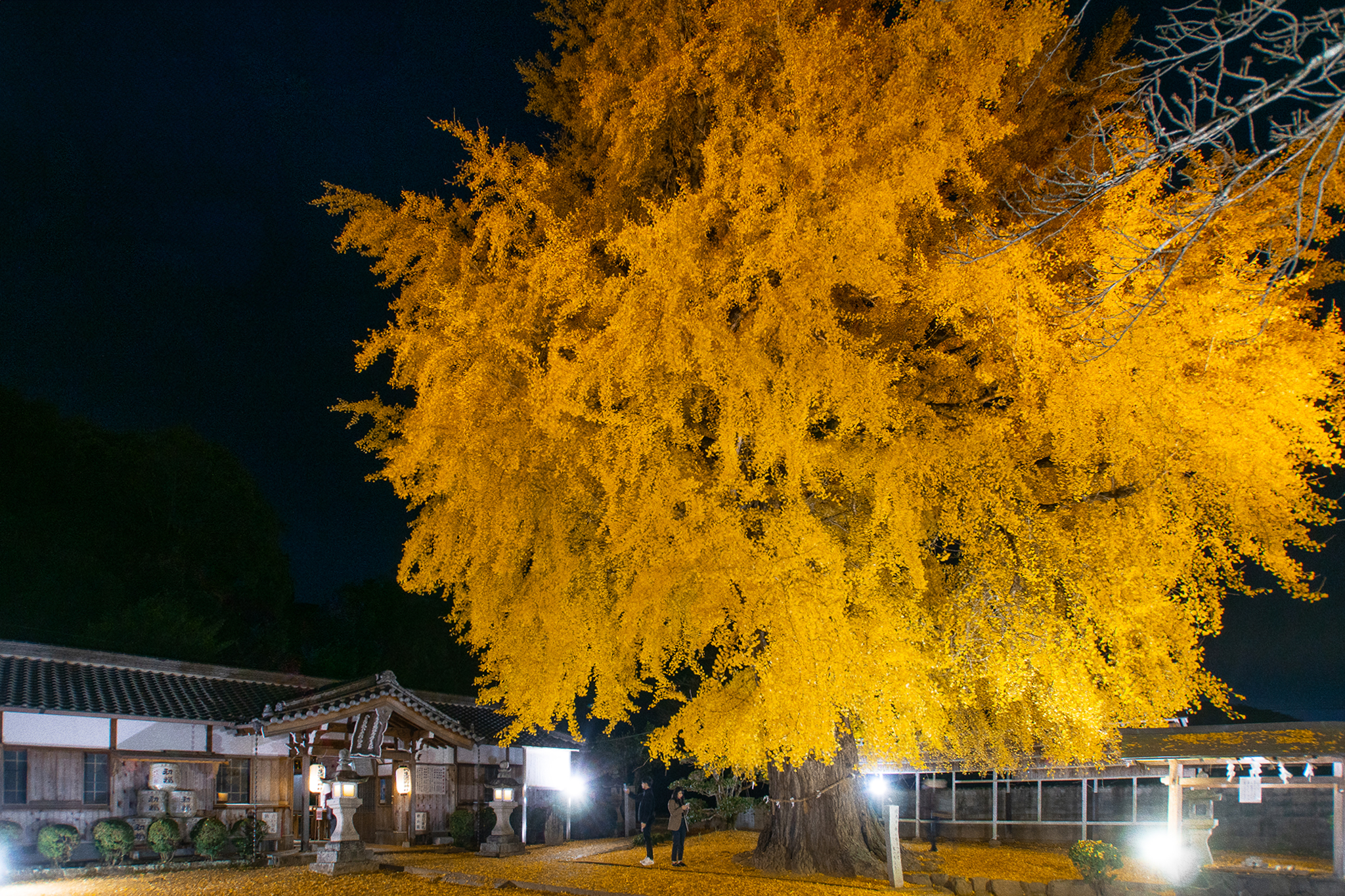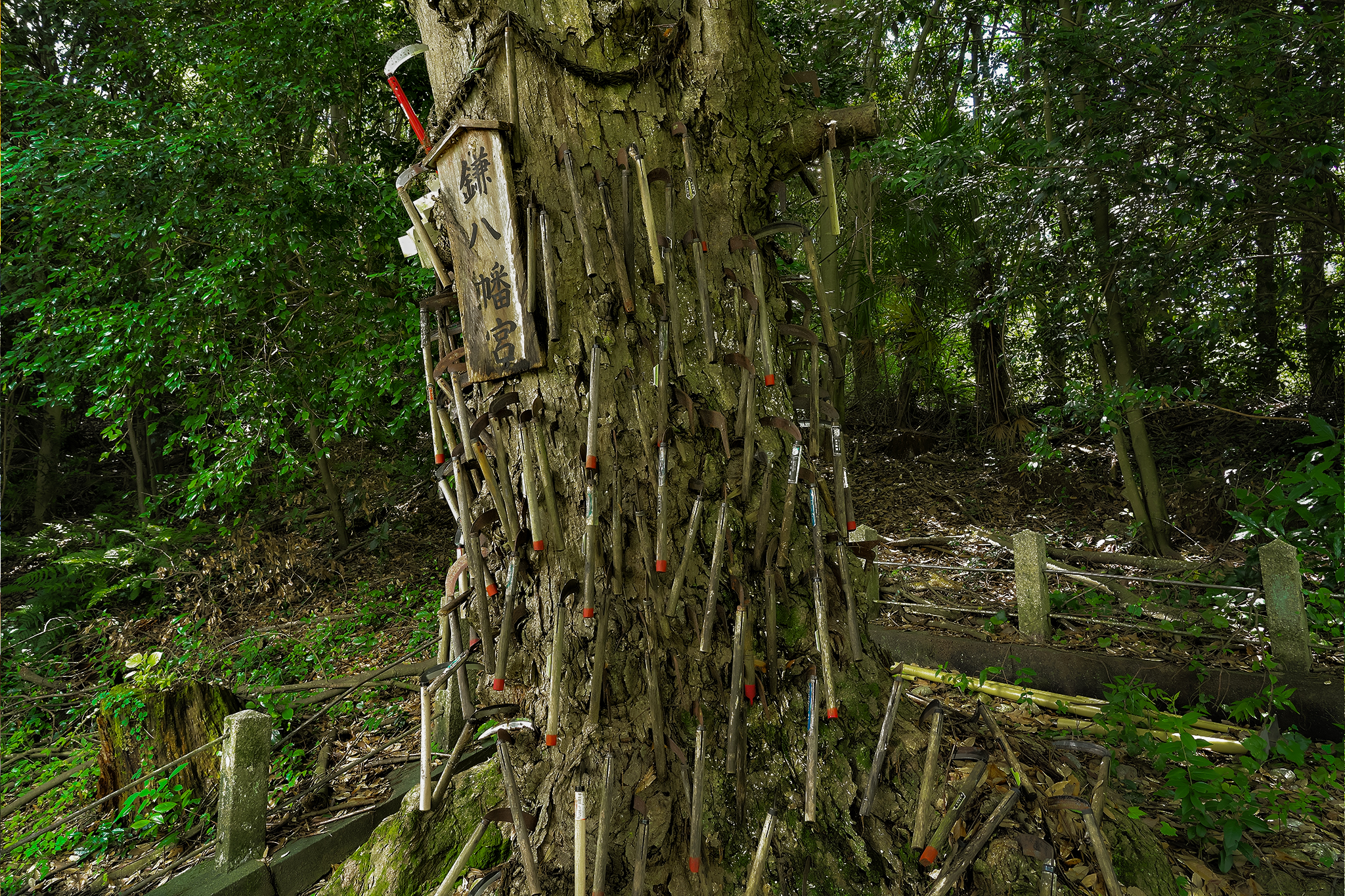Deep in the woods of Wakayama, hidden behind the Niusakadono Shrine lies Kama Hachimangu. It is arguably Japan’s most famous en-kiri shrine: a place to go to break your current strain of luck. It has attracted visitors since the Meiji period, and for good reason.
History of the Shrine
Kama Hachimangu was built more than a century ago. It quickly became popular as a place for local farmers to pray to the Shinto gods, asking for a bountiful harvest, lots of rain for their crops and so on. But at some point in the shrine’s history, the residents began to pay tribute to the gods in a unique way.
A Tree of Sickles
Just behind the shrine’s torii gates there is a red-barked oak tree. Today, the oak tree stands out because it is full of sickle knives. The large crescent-shaped axes are stuck deep into the tree. From rusted, years-old specimens through to shinier, newer versions, the practice of sticking knives into the tree doesn’t seem to have died out.

Praying at Kama Hachimangu
Because of the sinister appearance of Kama Hachimangu’s infamous tree, people come from across the country to marvel at the spectacle. Believers head to Kama Hachimangu to cut off ties to bad relationships and change your fate. Often, people will visit during a tough circumstances, to hope they can get out of it somehow.
Wives who are struggling to escape from abusive husbands have been interviewed as recently as last year at the site of the shrine, visiting it to pray that their marriage dissolves quickly. Doing this symbolic act may give someone who is feeling vulnerable the willpower to get out of an abusive relationship.
Conversely, for people who are unlucky in love — whether existent or not — there is the chance to visit the shrine and hopefully cut their unlucky streak.

No More Knives
To protect the health of the tree, since 2017 the priests have requested that visitors pray in a more peaceful way: by writing their wishes on sickle-shaped votives. These plaques, known as ema in Japanese, are then hung onto the torii gates in front of the shrine.









